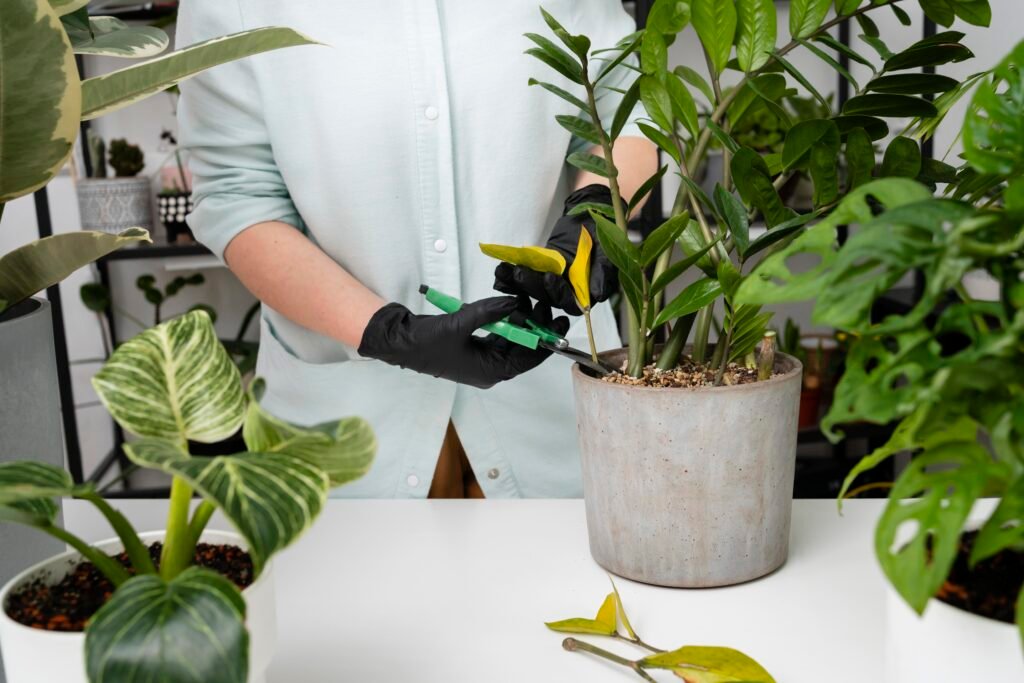Yellow leaves on indoor plants can be a sign of various issues. Here are some common causes:
1. Overwatering or Underwatering: Both overwatering and underwatering can cause yellowing of leaves. Overwatering can lead to root rot, depriving the plant of oxygen, while underwatering can cause stress and nutrient deficiencies.
2. Poor Drainage: If the potting soil doesn’t drain well, excess water can accumulate around the roots, leading to root rot and yellowing leaves.
3. Nutrient Deficiency: Lack of essential nutrients such as nitrogen, iron, magnesium, or potassium can cause yellowing of leaves. This can occur if the plant isn’t receiving proper fertilization or if the pH of the soil is incorrect, affecting nutrient availability.
4. Excessive Fertilization: Applying too much fertilizer can burn the roots and cause yellowing of leaves. Always follow the recommended dosage on the fertilizer packaging.
5. Low Light: Insufficient light can cause the yellowing of leaves, especially for plants that require lots of sunlight. Consider moving the plant to a brighter location or providing artificial lighting.
6. Temperature Stress: Drastic temperature changes, drafts, or exposure to cold or hot air can stress the plant, leading to the yellowing of leaves.
7. Pests and Diseases: Infestations by pests such as spider mites, aphids, or mealybugs, as well as fungal or bacterial diseases, can cause yellow spots or overall yellowing of leaves.
8. Root Bound: If the plant has outgrown its pot, the roots may become cramped and unable to absorb nutrients properly, leading to the yellowing of leaves.
9. Environmental Factors: Factors like air pollution, chemical exposure, or nearby heat sources can also contribute to the yellowing of leaves.
Yellow leaves on indoor plants can be remedied with the following steps:
1. Adjust Watering: Ensure proper watering by allowing the soil to dry out between waterings to prevent overwatering and water stress. Use pots with drainage holes to promote good drainage.
2. Improve Soil Drainage: Enhance soil drainage by using a well-draining potting mix and adding perlite or coarse sand to the soil.
3. Address Nutrient Deficiencies: Correct nutrient deficiencies by fertilizing plants with a balanced fertilizer or a formula designed to address specific deficiencies like nitrogen, iron, or magnesium.
4. Combat Pests and Diseases: Treat pests such as spider mites or aphids and fungal diseases with appropriate measures like insecticidal soap or horticultural oil.
5. Maintain Consistent Environmental Conditions: Prevent environmental stress by avoiding drafts, maintaining consistent temperature and humidity levels, and placing plants away from sources of sudden temperature changes.
By implementing these remedies, you can help your indoor plants recover and thrive with healthy, green foliage.

